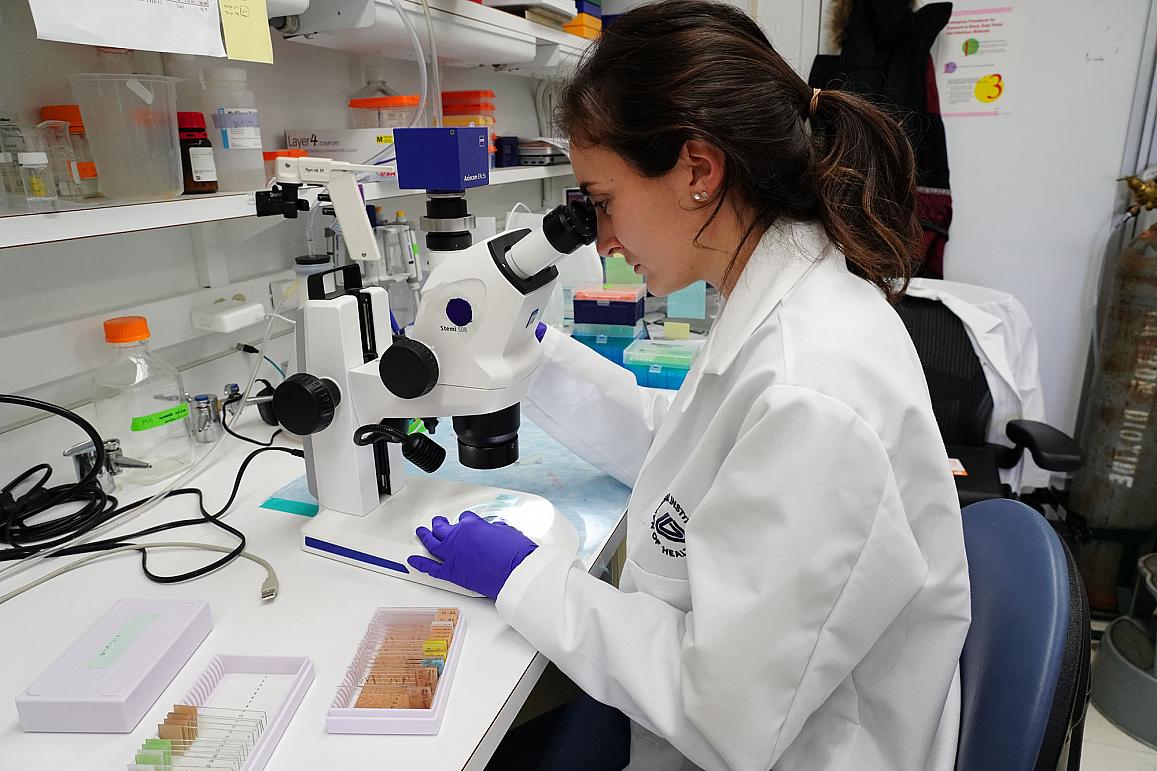
A form of biological engineering called “base editing” has cured a teenager’s seemingly uncurable cancer in the United Kingdom.
Alyssa, a thirteen-year-old girl from Leicester, was diagnosed with T-cell acute lymphoblastic leukemia (T-ALL) in May 2021. After chemotherapy and a bone-marrow transplant failed to rid her of cancer, Alyssa’s chances of survival were incredibly low.
However, doctors were able to use the revolutionary base editing treatment, which was invented just six years ago. Six months after receiving the treatment, Alyssa’s cancer is now undetectable.
What is base editing?
Bases are the building blocks of genetic code. There are four types of bases, adenine (A), cytosine (C), guanine (G), and thymine (T). The information in DNA is stored as a code made up of these four chemical bases. Human DNA consists of approximately three billion bases.
A scientific paper published six years ago introduced base editing as “a new approach to genome editing that enables the direct, irreversible conversion of one target DNA base into another in a programmable manner, without requiring dsDNA backbone cleavage or a donor template.”
Base editing enables medical practitioners and scientists to select a precise part of the genetic code and then change the molecular structure of only a single base. This base can be converted and hence change its genetic instructions.
Professor Waseem Qasim from UCL and Great Ormond Street said that base editing is a “very fast-moving area of science” and has “enormous potential” as a treatment for a variety of diseases.
Curing Alyssa’s cancer
T-cells are a part of the immune system and are supposed to protect the body from foreign substances. However, the T-cells of patients with T-ALL become dysfunctional.
The team at Great Ormond Street used the revolutionary new treatment to engineer a new form of T-cell with the capability of hunting down and eliminating the cancerous T-cells in Alyssa’s body.
Healthy T-cells were provided by a donor. The doctors and scientists then edited these T-cells specifically to fight Alyssa’s cancer.
The first base editing step was to disable the targeting mechanism of the T-cells so that they would not negatively affect Alyssa’s body. The second edit was to remove the chemical marking CD7, which is found on all T-cells.
Thirdly, T-cells were edited by adding an “invisibility cloak” to prevent the cells from being killed as a result of chemotherapy medication. When these edits were completed, the T-cells were finally modified to go hunting for anything with the CD7 marking. The base edited T-cells without the CD7 markers were then able to destroy other T-cells, including cancerous ones.
Edited T-cells attack all other T-cells in the body, so Alyssa also required a second bone-marrow transplant as part of the process of rebuilding her immune system.
Recovery
Alyssa spent sixteen months in the hospital and was unable to see many of her close family members due to the risk of infection. Her immune system required time to recover because the treatment attacked healthy as well as cancerous T-cells.
Three months after the base editing treatment, doctors were concerned that it had failed when signs of cancer were found during a check-up. However, Alyssa’s two most recent check-ups have found no signs of cancer.
“You just learn to appreciate every little thing,” Alyssa said after her treatment. “I’m just so grateful that I’m here now.”
Doctors and scientists are pleased with the results thus far. Dr. Robert Chisea, who works at the Bone Marrow Transplant (BMT) Unit at Great Ormond Street, commented, “It is extremely exciting. Obviously, this is a new field in medicine and it’s fascinating that we can redirect the immune system to fight cancer.”
Alyssa made the decision to be the first patient to receive the experimental therapy. Now, medical practitioners are optimistic that base editing can be used to tackle a wide array of illnesses.
See all the latest news from Greece and the world at Greekreporter.com. Contact our newsroom to report an update or send your story, photos and videos. Follow GR on Google News and subscribe here to our daily email!



